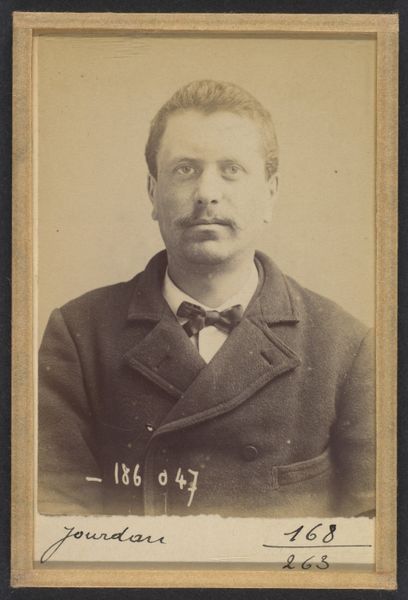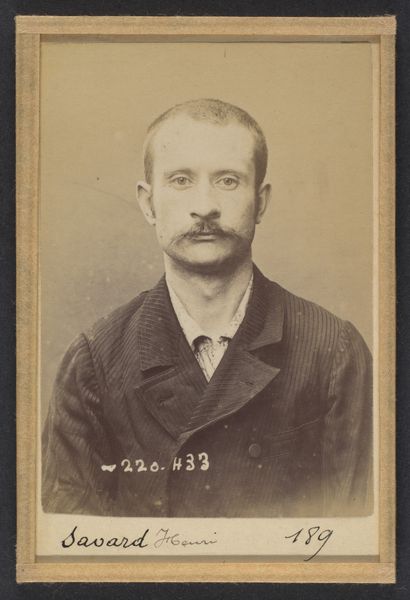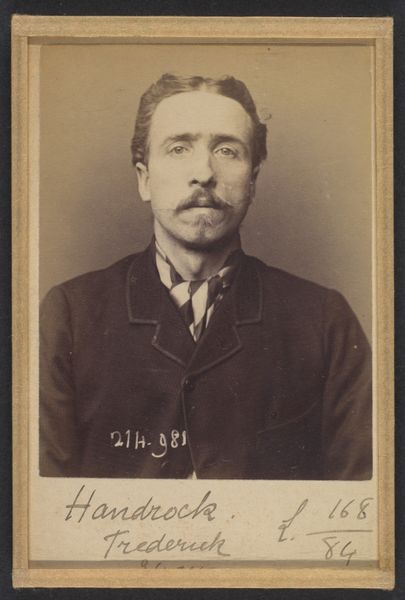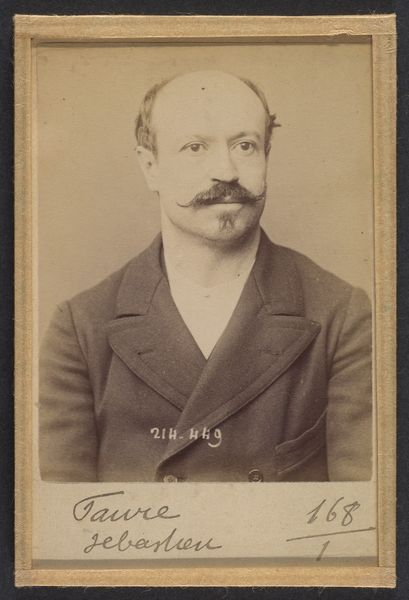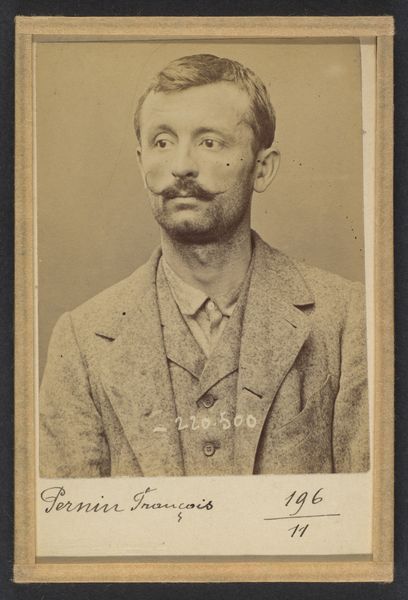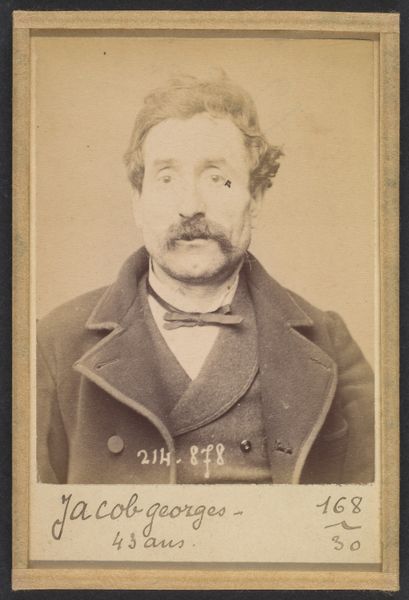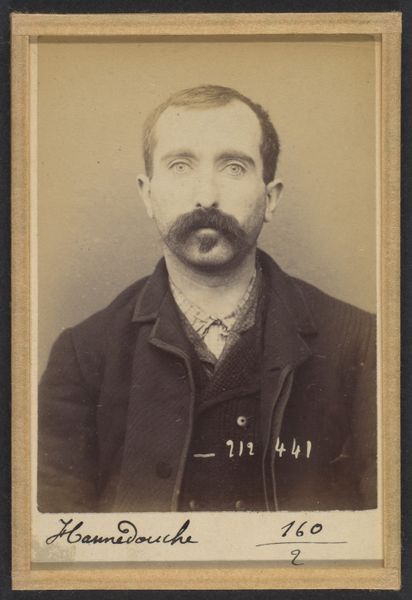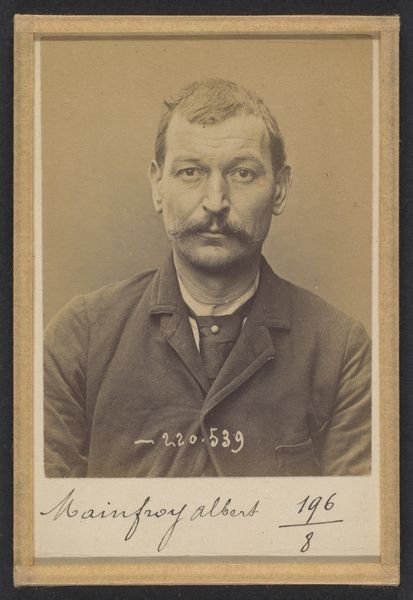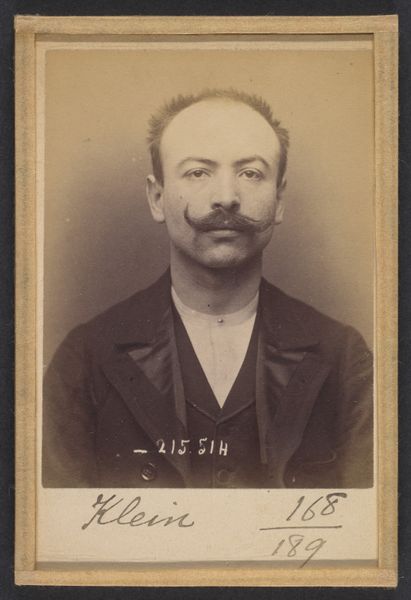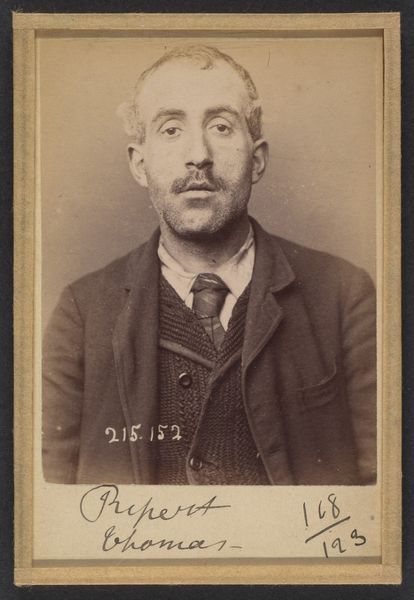
Vignaud. Antoine. 32 ans, né à Cussey (Allier). Cordonnier. Vol anarchiste. 21/3/94. 1894
0:00
0:00
print, daguerreotype, photography
#
portrait
# print
#
daguerreotype
#
photography
#
historical photography
#
poster
Dimensions: 10.5 x 7 x 0.5 cm (4 1/8 x 2 3/4 x 3/16 in.) each
Copyright: Public Domain
Curator: Here we have an interesting example of early criminal documentation, a daguerreotype dated to 1894 by Alphonse Bertillon, titled "Vignaud. Antoine. 32 ans, né à Cussey (Allier). Cordonnier. Vol anarchiste. 21/3/94". Editor: There’s something starkly captivating about it. The sepia tones lend an antique quality, but the man’s intense gaze holds your attention; despite its documentary purpose, I sense a degree of theatricality. Curator: Precisely! Bertillon’s innovation, "portrait parlé," aimed to standardize mugshots using anthropometry for identification. However, it unwittingly crafted a new form of visual categorization, linking appearance and presumed criminality in the public imagination. Notice the inscription? It’s as much about labeling the subject as capturing him. Editor: Visually, I'm struck by how the high collar and jacket, while ostensibly bourgeois, can't hide the vulnerability in his expression. He’s subtly off-center in the frame, creating an imbalance that unsettles the viewer, maybe mirroring his societal position at the time. Curator: And this highlights a paradox. Anarchists, often portrayed as monstrous threats to the social order, are here reduced to a standardized format dictated by that same order. His identity, stripped to bare facts and physical measurements, becomes a tool for social control. The photo embodies the tension between individual identity and state power. Editor: The sharp details captured in the image offer incredible insights to his physiognomy. Look at the meticulous details from his mustache to his hairline and skin, so evocative. The overall composition achieves a balance of objectivity and underlying subjectivity, perhaps reflecting Bertillon’s own complicated role. Curator: Bertillon's method, born out of positivist criminology, soon proved flawed as solely reliable identification, but it laid foundations for forensics and criminal profiling. It demonstrates how supposedly objective methods were inherently enmeshed in socio-political assumptions about crime and deviance. Editor: It's a chilling blend of art and science, and seeing the human element, stripped bare by photography, makes one pause and contemplate the cost. Curator: Indeed, Vignaud, both an individual and symbol, reminds us that these supposedly neutral documents participate in larger systems of power.
Comments
No comments
Be the first to comment and join the conversation on the ultimate creative platform.
